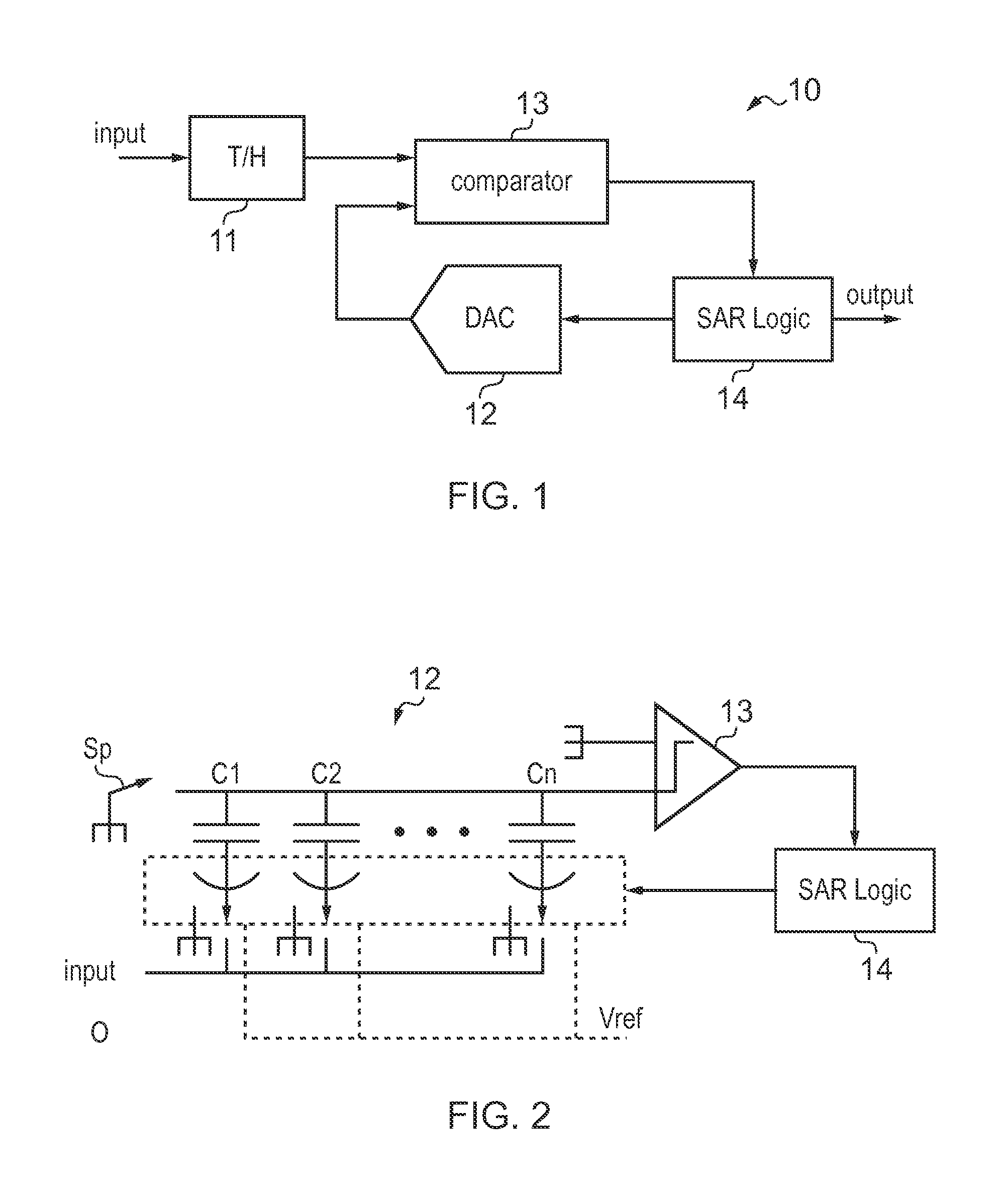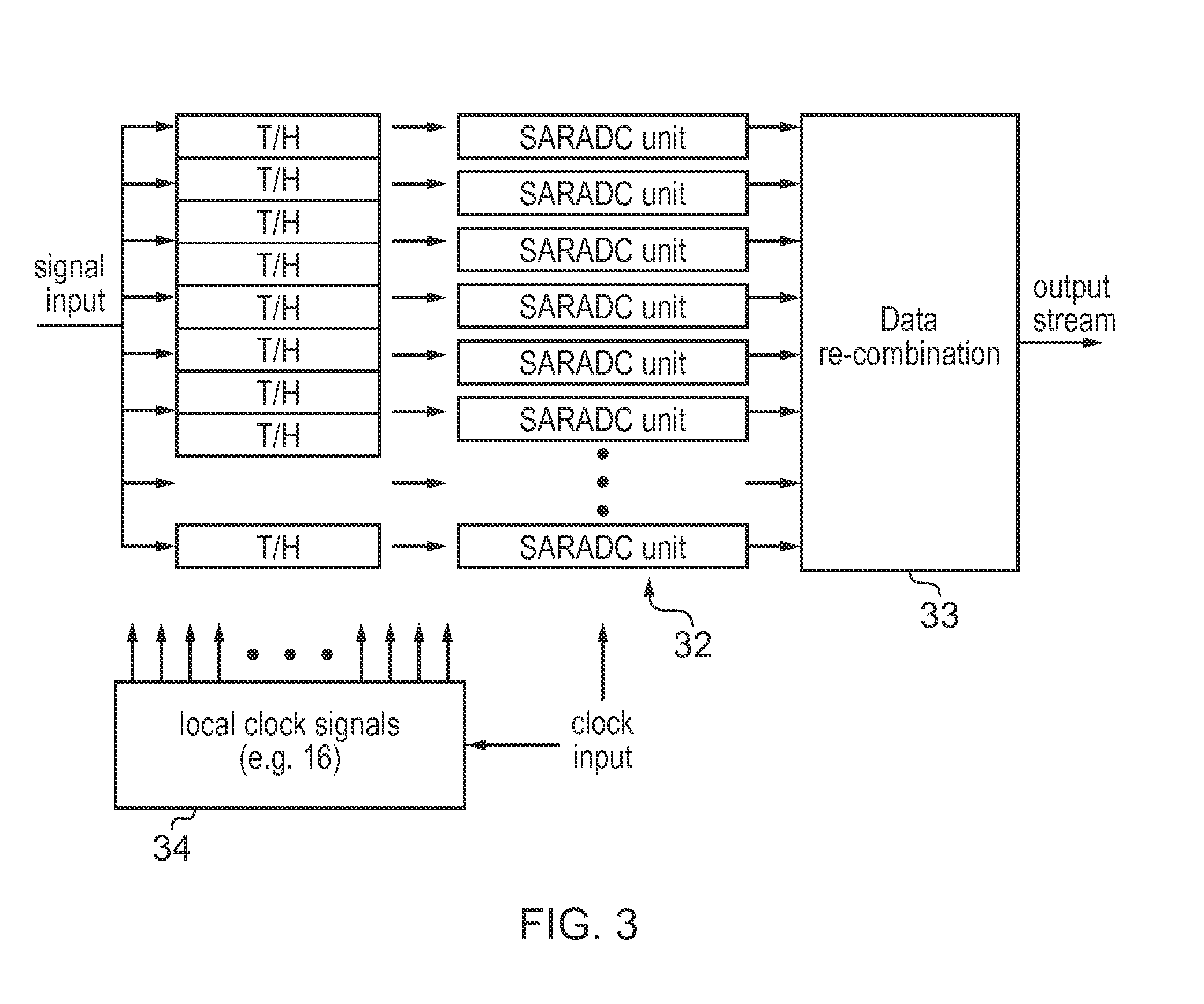ADC
a digital converter and analog technology, applied in the field of analogtodigital converters, can solve the problems of reducing the input bandwidth even further, and limiting the bandwidth, so as to achieve significant power advantages, improve the speed of operation, and increase the degree of design freedom
- Summary
- Abstract
- Description
- Claims
- Application Information
AI Technical Summary
Benefits of technology
Problems solved by technology
Method used
Image
Examples
Embodiment Construction
[0039]In order to aid an understanding of the invention, it will be helpful to consider a source of inaccuracies which ADCs according to embodiment of the invention can reduce or ameliorate: in signal processing systems such as Analog-to-Digital converters, main signal processing devices 52 such as the one shown in FIG. 5 form basic parts of conversion algorithms processing a multiplicity of input signals x, y, . . . to generate signal z. A comparator is an example of a main processing device comparing signals x and y and generating the result z.
[0040]Often, signals x and y have significantly different electrical properties, e.g. common mode level, or the circuits that generate them cannot directly interface with the main processing device. In these cases, these signals must be pre-conditioned before being processed by the main device. This is shown in FIG. 5, assuming that signal x requires pre-conditioning by pre-conditioner 51 resulting in x′. Signal x′, instead of x, will now be...
PUM
 Login to View More
Login to View More Abstract
Description
Claims
Application Information
 Login to View More
Login to View More - R&D
- Intellectual Property
- Life Sciences
- Materials
- Tech Scout
- Unparalleled Data Quality
- Higher Quality Content
- 60% Fewer Hallucinations
Browse by: Latest US Patents, China's latest patents, Technical Efficacy Thesaurus, Application Domain, Technology Topic, Popular Technical Reports.
© 2025 PatSnap. All rights reserved.Legal|Privacy policy|Modern Slavery Act Transparency Statement|Sitemap|About US| Contact US: help@patsnap.com



